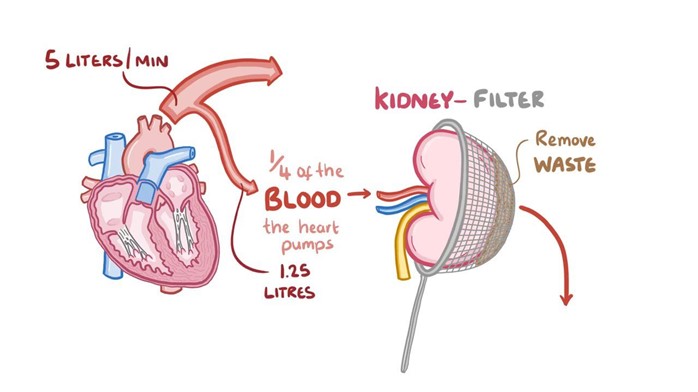A client who is hypotensive is receiving dopamine, an adrenergic agonist, IV at the rate of 8 mcg/kg/min. Which intervention should the nurse implement while administering this medication?
Assess pupillary response to light hourly.
Initiate seizure precautions.
Monitor serum potassium frequently.
Measure urinary output every hour.
The Correct Answer is D
Choice A: Assessing pupillary response to light hourly is not an intervention that the nurse should implement while administering dopamine, as this is not related to the effects or side effects of dopamine. This is a distractor choice.
Choice B: Initiating seizure precautions is not an intervention that the nurse should implement while administering dopamine, as this is not a common or expected complication of dopamine. This is another distractor choice.
Choice C: Monitoring serum potassium frequently is not an intervention that the nurse should implement while administering dopamine, as this is not affected by dopamine or hypotension. This is another distractor choice.
Choice D: Measuring urinary output every hour is an intervention that the nurse should implement while administering dopamine, as this can indicate the effectiveness of dopamine in improving renal perfusion and blood pressure. Therefore, this is the correct choice.

Nursing Test Bank
Naxlex Comprehensive Predictor Exams
Related Questions
Correct Answer is B
Explanation
Choice A: Remove the catheter and palpate the client’s bladder for residual distention. This is not the best action, as it may cause discomfort and trauma to the client. The catheter should not be removed until the bladder is fully emptied or up to 1,000 mL of urine is drained, as removing it too soon may cause urinary retention or infection.
Choice B: Allow the bladder to empty completely or up to 1,000 mL of urine. This is the best action, as it can prevent bladder spasms, overdistention, or rupture. The nurse should monitor the urine output and color, and document the amount and characteristics of urine drained.
Choice C: Clamp the catheter for thirty minutes and then resume draining. This is not the best action, as it may cause pain and discomfort to the client. The catheter should not be clamped unless ordered by the healthcare provider, as clamping it may increase the risk of infection or bladder damage.
Choice D: Remove the catheter and replace with an indwelling catheter. This is not the best action, as it may cause unnecessary exposure and trauma to the client. The catheter should not be replaced unless ordered by the healthcare provider, as replacing it may increase the risk of infection or urethral injury.
Correct Answer is ["30"]
Explanation
First, we need to find the concentration of insulin in the IV solution, which is the ratio of insulin units to saline volume. To do this, we use the given information that the IV solution contains 100 units in 250 ml. So, we divide 100 by 250 and get 0.4 units/ml.
Next, we need to calculate the infusion rate in ml/hour for the ordered dose of 12 units/hour. To do this, we use the ratio of insulin units to saline volume, which is 0.4 units/ml. So, we set up a proportion as follows:
0.4/1=12/x
To solve for x, we cross-multiply and get 0.4 x = 12. Then, we divide both sides by 0.4 and get x = 30. So, the infusion rate is 30 ml/hour.
Therefore, the nurse should program the infusion pump to deliver 30 ml/hour..
Whether you are a student looking to ace your exams or a practicing nurse seeking to enhance your expertise , our nursing education contents will empower you with the confidence and competence to make a difference in the lives of patients and become a respected leader in the healthcare field.
Visit Naxlex, invest in your future and unlock endless possibilities with our unparalleled nursing education contents today
Report Wrong Answer on the Current Question
Do you disagree with the answer? If yes, what is your expected answer? Explain.
Kindly be descriptive with the issue you are facing.
